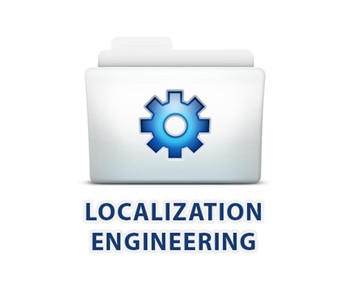Localization Engineering: A Key Project Component
There are many aspects of a localization project. One of the key team members in the success of the project is the localization engineer, a role that many people don’t fully understand. The point of this blog is to offer insight into the responsibilities of the localization engineer and the role the position plays in the success of the project.
So what is a localization engineer? In the simplest of terms, localization engineers do all the work that the translators, project managers or the original product developers don’t do.

In the early 1980s the position emerged as a bridge between the translation team and the original developers. Localization engineers are responsible for analyzing and prepping files in a variety of applications to be localized, taking the files apart and then putting them all back together after translation occurs. The engineer needs to know and handle all the technical aspects of the translation itself. Without the support of an engineer, translated content may not display properly. So effective localization engineering requires a mix of technology and language support.
Now that we understand what a localization engineer is, let’s focus on what they do. A localization engineer prepares, executes and evaluates.
1. Preparation
File preparation is the first step in the localization process and includes reviewing the requirements of the client, analyzing and preparing files and building a schedule that reflects the scope of work, best practices and client expectations. The localization engineer is responsible for building the localization kit which includes:
- Prepared files for localization with code protected
- Instructions for the project team
- Tools to complete the work like translation memories, QA plans or test scripts
2. Project Execution
Though localization engineers are not responsible for the translation, they provide technical support during this production phase. They are primarily responsible for the processing of the translation prior to client delivery. Their responsibilities include:
- Product Rebuild: During translation, text can contract or expand depending on the language, or the orientation may change as in the case with Arabic or Hebrew. Though localization engineers prepare the native file format to protect the code or graphical elements during translation, the final file still needs to be reviewed for corrupted codes or missing translation strings that may impact the way the translation displays in the document, webpage or software. Localization engineers will make adjustments/corrections to files as needed.
- Final QA: The last step in the production process is the quality assurance or “QA”. Localization engineers work with the project team to identify and correct cosmetic, linguistic and basic functionality issues.
3. Project wrap-up and evaluation
Client feedback is an important part of the localization process. The localization engineer works with the team to implement client review changes and update translation memories. They also document outcomes and lessons learned to ensure the next project is executed flawlessly.
There are many facets to a localization project and they can be complicated. Though lesser known, the localization engineer is a key role in pulling those pieces together and helping ensure the success of your localization project.
